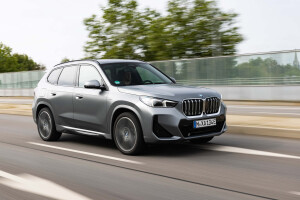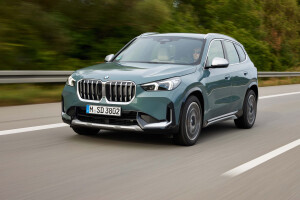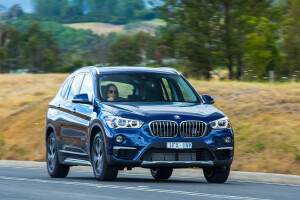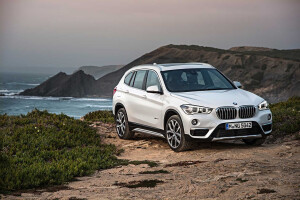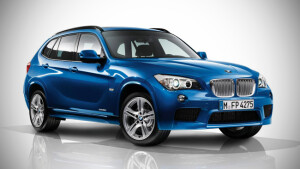Latest Review
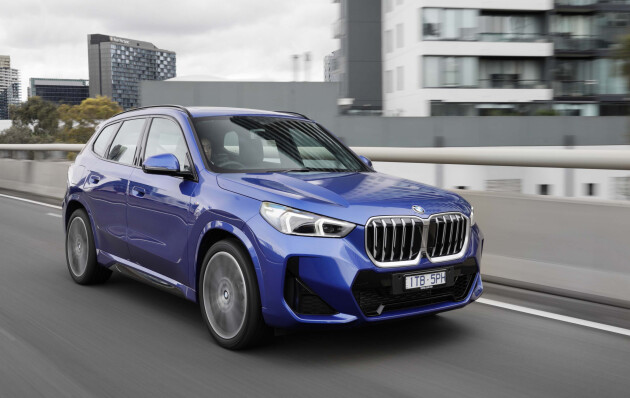
2023 BMW X1 review: Australian launch
Award for this year's biggest improver? The BMW X1 could be in with a shout
You probably know a bit about the BMW X1 already. In a nutshell, Munich's baby SUV has been around since 2009 through two generations and it's done some solid numbers without ever being a particular darling of the Wheels test team.
It now arrives in third-generation guise and, without wishing to pre-empt the verdict of this test, it's fair to say this latest X1 iteration has upped its game considerably. It needed to.
Rivals with a smart badge on the bonnet haven't been sitting on their hands – think Audi Q3 and Volvo XC40 – and the X1 needs to pay its way in a range of SUVs that now accounts for more than 60 per cent of BMW Australia's sales.
So can the X1 do what it's never been able to do to date, namely elbow its way into the winners' circle at the top of this class? Let's dive straight into that.
JUMP AHEAD
- How much is it, and what do you get?
- How do rivals compare on value?
- Interior comfort, space and storage
- What is it like to drive?
- How is it on fuel?
- How safe is it?
- Warranty and running costs
- VERDICT
- Specifications
- FAQs
How much is it and what do I get?
At present, there are two models to choose from. Opening proceedings is the X1 sDrive18i at $53,900 before on-road costs. It's powered by a three-cylinder 1.5-litre petrol engine good for 115kW and 230Nm. Admittedly that doesn't sound like much engine for a $50K+ vehicle, and it only drives the front wheels, but Mercedes-Benz is quite happy to sell you a $79K car with a 1.5-litre powerplant that drives two treads so perhaps it's not quite such a stretch.
Sitting above that is the X1 xDrive20i, which fronts up with a four-cylinder 2.0-litre petrol engine that divides its 150kW/300Nm between all four wheels and opens at $65,900 plus on-road costs.
We didn't get the chance to test what will become the range-topper of the X1 range, the all-electric iX1 xDrive30, but this 230kW EV, with a mooted 440km of battery range is priced at $82,900 (before on-road costs), will be offered in either xLine or M Sport trims and will feature 22kW onboard AC charging – a first for BMW.
2023 BMW X1 Australian pricing
All pricing is before on-road costs.
Choose to charge on a DC fast charger and it'll accept up to 130kW, netting you 10-80 per cent top-ups in as little as 29 minutes. A punchy electric BMW SUV for less than Kia charges for an EV6 GT-Line might well prove popular, but we'll cover that vehicle separately when it does make landfall here in Australia.
If it's been a while since you've been a BMW customer, you might well be a little surprised at what you get for your money. Long gone are the days when BMW would offer a relatively bare-bones standard car and then present you with a lengthy options list that included fitments you'd reasonably expect to be included on a vehicle at half the price.
As such, the base X1 comes with a decent slug of standard gear.
Standard features
Hand over another $12K for the X1 xDrive20i and aside from the heftier engine and all-wheel drive running gear you'll also net:
BMW has also streamlined the options list, ostensibly to make the X1 an easier car to build. Rather than allowing buyers to specify individual features at will, it bundles the options into packs.
The Enhancement Pack is priced at $4615 for the sDrive18i and $4000 for the xDrive20i. It adds metallic paint, a panoramic sunroof, Harman Kardon stereo and sliding rear seats. The reason why the pack is more expensive on the sDrive18i is that it also adds Driving Assistant Professional and electric seat adjustment up front, which are already standard on the xDrive20i.
Should you so wish, ask your dealer about 19-inch wheels for the X1 sDrive18i ($2000), 20-inch wheels ($3500 for sDrive18i, $2000 on xDrive20i) and Vernasca leather upholstery ($2800).
That's as far as you can go in adding gear to an sDrive18i, but should you opt for the all-wheel drive car, you can then furnish the car with a $3000 M Sport pack which includes:
Alpine White is the only non-metallic paint finish available for the X1, but metallic finishes comprising Mineral White, Black Sapphire, Phytonic Blue, M Portimao Blue, Sanremo Green, Cape York Green and Utah Orange are another $1800 or complimentary if you've ticked the box for the Enhancement Pack.
Alternatively, BMW Individual Storm Bay+, a voguish primer grey, is a $2500 option or $700 over the price of the Enhancement Pack.
Rather controversially, BMW also offers a couple of subscription features on the X1, detailed below.
The argument that BMW makes for this is, again, that it simplifies the build process and offers customers choice and the opportunity to upgrade their vehicle post-purchase.
We could go back and forth on the wastefulness of including heating elements in a vehicle's seats and steering wheel when they're not required and the cost implications thereof, but you probably already have a view on this. Needless to say, it's likely to be a trend that spreads across the sector.
BMW has confirmed that activated subscriptions are passed onto subsequent owners so if, for example, you bought a three-year heated seats subscription and sold the X1 after a year, the car retains the feature until it expires rather than the original owner getting a pro-rata refund.
You may well have heard initial reports making much of the fact that the X1 is a bigger vehicle than its predecessor and it is. Not by a huge amount, but the dimensions have all been teased out slightly. It's still smaller than a first-gen X3, so take the hyperbole with a pinch of salt.
To put some meat on those bones, the wheelbase has been extended by 22mm, the length by 53mm, height by 44mm, width by 24mm, front track by 31mm and rear track by an identical 31mm.
Still, at 4500mm in length, the five-seat X1 is 75mm shorter than a Mazda CX-5 – so it's unlikely that this latest generation model will have outgrown your garage.
How do rivals compare on value?
In order to assess the X1's relative value proposition, it's important to understand where it sits in the market.
Its key rivals are the Audi Q3, the Mercedes-Benz GLA and the Volvo XC40, each relatively compact five-seat SUVs with desirable badges that measure between 4400 and 4500mm from stem to stern.
Forget about cars like the Jaguar E-Pace or the Range Rover Evoque as credible rivals. These are now far more expensive and tend to compete with the BMW X3 in terms of pricing and features if not size.
Pricing for the third-gen BMW X1 notably undercuts the smaller Mercedes-Benz GLA, the 1.5-litre 115kW sDrive18i being pitched nearly $7K lower than the 1.3-litre 120kW GLA200. In a similar vein, the all-wheel drive xDrive20i variant is more than $8K cheaper than the GLA250 4Matic. The Mercedes fronts up with an additional 15kW while the BMW counters with more interior space. Take your pick.
Audi pitches its entry-level Q3 35 TFSI at around $2500 less than the X1 sDrive18i or pretty much identically if you prefer the Sportback body. Should you want all-wheel drive, you'll pay $63,700 for a Q3 40 TFSI Quattro S Line that just undercuts the $65,900 X1 xDrive20i (both before on-road costs). One caveat: the Audi packs a mere 132kW versus the BMW's 150kW.
Then there's the joker in this pack, the Volvo XC40. This opens at $52,900 with a 145kW front-drive model and a 184kW all-wheel drive variant is available from $63,990 (both before on-road costs). If you're looking for the biggest bang for your buck in this sector, this is where we'd look first.
All of these marques now offer five-year, unlimited-kilometre warranties, BMW belatedly upgrading its three-year deal to five, taking effect from November 1 2022, with validity backdated to registrations from October 1 2022.
Interior comfort, space and storage
The X1's cabin is the biggest point of departure compared to its predecessors, offering a far plusher, airier and feature-rich environment.
BMW has leaned heavily into digital interaction with this generation, the most obvious difference being the large curved digital display that dominates the dash.
Housing BMW's latest Operating System 8, the screens comprise a 10.7-inch Control Display that melds with the 10.25-inch instrument cluster ahead of the driver and is augmented by additional information fed via a standard head-up display.
There's no iDrive controller and BMW's gesture control system has also been quietly consigned to history, the X1 instead relying on touchscreens and voice controls via the 'Hey BMW' prompt.
The operating system is swift, but the basic functionality is tricky to navigate at first. Some fairly rudimentary features, such as switching on air recirculation for the climate control, require a number of button presses. The wireless Android Auto installation was quick to boot up, held connection peerlessly and was pretty easy to switch in and out of phone mirroring when accessing other vehicle functions.
An augmented satellite navigation view superimposes directions onto vision from the forward-facing camera, but such is the clarity of the head-up display that you'll tend to rely on that rather than glancing down at the screen as you approach a junction.
Integrating many of the supplementary functions into the touchscreen, for better and for worse, has allowed for a genuinely clean cabin design that features a spacious centre console with a floating armrest, a couple of cup holders, dual USB-C ports, two 12-volt power sockets and a vertical wireless charging pad.
BMW has also made a dedicated effort in creating slim trim panels and air vents to free up space and create the impression of airiness. The driving position is good, with plenty of adjustability to steering wheel and seats, the latter being electrically powered as standard in the xDrive20i.
The front seats themselves are interesting, with BMW fitting a sports seat as standard to all models, albeit one where the company has attempted to build in extra comfort as well as a decent amount of side support.
Normally this results in a bulky chair that impinges on rear-seat space but, much as Lotus achieved with its Probax seats, BMW has managed to keep the profile of the seat relatively svelte. An additional 22mm of wheelbase serves to help knee room.
Headroom up front is good for taller drivers, even with the fitment of the dual-pane panoramic glass roof. In the rear, there's plenty of room for two decently-sized adults, although the seating position is a bit higher. Anyone much over six feet tall may find their hair brushing the surround of the sunroof as a result.
The rear bench splits 40:20:40, so while both of the outboard seating positions are fine, the middle seat is definitely the non-preferred option, being higher, narrower and harder. Rear passengers do get air vents and a pair of USB-C ports and there's also the added benefit that the window line doesn't kick up too sharply, allowing smaller kids a view out.
All of the door bins could be a bit bigger to better accommodate large bottles, but the central storage bin is relatively generous and there's additional oddments space beneath the floating armrest.
2023 BMW X1 boot space
Move round to the back and the somewhat leisurely electrically-operated tailgate lifts to reveal 540 litres of boot space with the rear seats in place and up to 1600 litres when they're folded. That's 35 litres more than the previous X1 in five-seat mode and 50 more in two-seat guise.
What's it like to drive?
That very much depends on your expectations. Approach the vehicle expecting it to be the sharpest steer in its class, wearing your 'Ultimate Driving Machine' hat and you may well come away a little disappointed. For everyone else with a more sensible view about who buys compact SUVs and why, it's hard not to be impressed.
We sampled the sDrive18i first and while it's clear that any SUV with 115kW/230Nm with which to propel 1575kg up the road isn't exactly going to be a ball of fire, it never felt as if it was underspecified in the engine department for typical usage. It'll get to 100km/h in 9.0 seconds, which isn't hugely rapid but nor is it notably sluggish.
The three-cylinder 1.5-litre engine emits a purposeful warble when pressed and the seven-speed dual-clutch transmission does a decent job of keeping you plugged into the meat of the power.
That's a good thing because there are no paddle shifters with which to blip up and down the 'box should you so wish.
Ride quality, for so long the X1's Achilles heel, is now more than acceptable, despite the fact that the car I drove eschewed the standard 18-inch alloy wheels for 19-inch rims shod with Hankook Ventus Evo rubber measuring 245/45 R19 all round.
It coped well with some particularly scabby city streets and even when succumbing to the inevitable pothole out in the sticks, damping was measured and, yes, expensive feeling.
The steering doesn't gain quite such high marks. While it's true and accurate, the rim is too chunky and the assistance is such that genuine feedback is conspicuous by its absence.
You get used to it, but it means the X1 isn't the sort of car you'd jump into and drive just for the fun of it. It's just a little too mute in that regard to satisfy, although it's doubtful that too much of the target market will care.
Switching to Sport mode merely adds weight without offering any additional interaction. The plus side of the anodyne electrically-assisted steering is that the BMW is a very easy car to steer and park at low speeds, with decent visibility and a great surround-view camera.
Opt instead for the xDrive20i and you become aware right away that the 150kW/300Nm engine is delivering significantly more get-up-and-go. Even in the horrendously wet conditions in which we drove it, front-end scrabble from a standstill is notable by its absence and we didn't feel any traction control interventions, so the all-wheel-drive system is good.
BMW claims a 7.4 second 0-100km/h time for the xDrive20i variant, which is agreeably brisk. Again, BMW had upgraded the wheels, with a 20-inch option being offered for the first time on an X1. Even this didn't unacceptably cruel ride quality, the 245/40 R20 Continental EcoContact 6 tyres being a little quieter over coarse-chip surfaces than the previous Hankooks.
Optioning the M Sport pack brings M Sport suspension with a 15mm ride height reduction, M Sport steering and frequency selective damping, which is a good idea if you're intent on choosing the 20-inch alloys.
How is it on fuel?
BMW claims a combined economy figure of 6.5L/100km for the 2023 X1 sDrive18i and 7.4L/100km for the xDrive20i.
A local press launch with limited seat time isn't the best place to assess a vehicle's fuel economy – in fact, it's just about the worst – so we can't really fill in too many blanks around real-world consumption at this point. Check back for a full comparison with rivals for that one.
The official figures don't seem too bad in isolation, but it's worth considering that Volvo claims 6.7L/100km for the 184kW XC40 B5 and Mercedes an identical consumption figure for the 165kW GLA250 4Matic, both considerably more powerful than the xDrive20i.
How safe is it?
The 2023 BMW X1 has yet to be ANCAP tested.
Both of its predecessors scored the full five-star rating and though we can't presume this new model would follow suit, it would be a major surprise were it to fall short of that mark.
Even the entry-level X1 sDrive18i comes reassuringly stuffed with standard safety equipment, only the Driving Assistant Professional pack residing on the options list. This nets you the steering and lane control functions should you require them.
Standard safety features
Warranty and running costs
Here's some good news. BMW had, until recently, found itself at a disadvantage versus premium rivals in offering buyers a three- rather than five-year warranty. Well, that has now changed.
The official date the warranty takes effect from is November 1st 2022, but validity is backdated to registrations from October 1st 2022 as a gesture of goodwill.
Wolfgang Buechel, CEO of BMW Group Australia, said: “The new warranty offering perfectly complements our extensive range of ownership benefits, making the purchase of a new BMW or Mini even more compelling while providing long-term peace of mind for our customers during their ownership journey.”
Driving range
With a 51-litre fuel tank, range for the sDrive18i averages out at 784km while the xDrive20i ought to cover 689km between refills. Both will run on 95 RON premium unleaded.
Resale value
Three-year residual values are pitched at 56 per cent for both petrol-engined variants.
VERDICT
2023 BMW X1 buyers will get a well-finished, refined and handsome compact SUV that never feels as if it's trying too hard to impress.
The BMW X1 is an easy car to underestimate. Neither of the prior variants ignited the undergarments of professional road testers but have nevertheless performed reasonably in the sales charts. The third-gen model is cut from a different cloth.
It feels as though the X1 has grown out of its awkward teenage phase and finally understands its place in Munich's hierarchy of SUVs. It doesn't try to be particularly sporty and is all the better for it.
Buyers will get a well-finished, refined and handsome compact SUV that never feels as if it's trying too hard to impress.
It's perfectly possible to choose a base sDrive18i and drive it away from a dealership with precisely no options and not feel as if you've done yourself a disservice.
The one piece of advice I'd offer is that in order to preserve ride quality, don't be tempted by an uptick in wheel size. Tyre sidewall is your friend.
Of course, there will be some who wonder about the amount of engine you're getting for your money when choosing an X1 and that's a valid concern. There are better choices around if you want a compact SUV with some venom when you mash the right pedal.
Should outright speed be less important than the feel-good factor of a cohesive and genuinely likeable vehicle, you'll find a lot to like in the latest X1.
2023 BMW X1 specifications
Score breakdown
Things we like
- Mature styling
- Integration of tech
- Relaxed ride quality
- Improved value for money
Not so much
- Not the engaging driver-focused BMW of old
- Subscription features may rankle
- No iDrive controller
- Reduced scope for personalisation
News
-
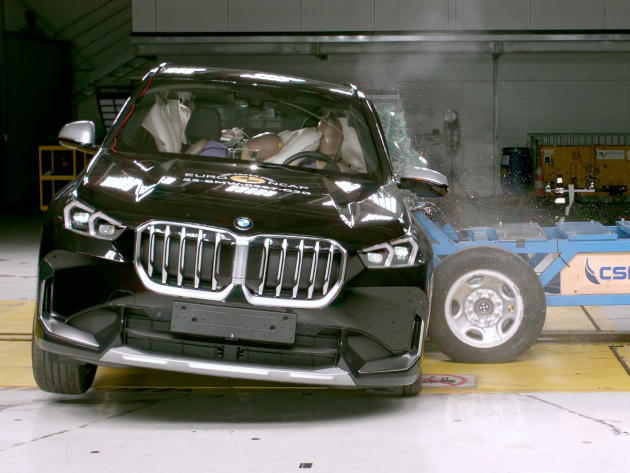 News
News2023 BMW X1 obtains five-star ANCAP safety rating
ANCAP has rated the BMW’s entry-level SUV the full five-stars, though the pure-electric version remains untested
-
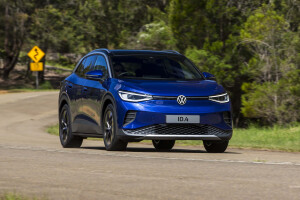 News
NewsNew Electric Cars for Australia: Everything coming in 2022/23
The EV revolution is gaining strength in Australia, which means greater diversity and choice for buyers
-
News
2023 BMW X1 pricing and features for Australia
BMW's small SUV has also spawned an all-electric variant, with both models set for an Australian launch – and now we've driven both
-
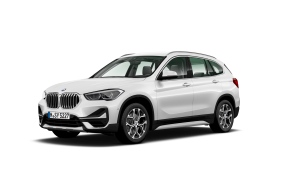 News
News2022 BMW X1 and X2 Sport Collection pricing and features for Australia
X1 and X2 line-ups are gaining a new grade
-
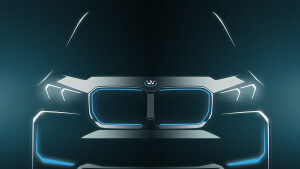
2023 BMW iX1: Electric range revealed
-
.jpg)
2023 BMW X1 M rumoured following spy photos
-
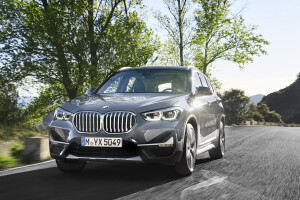
2020 BMW X1 facelift price and features announced
-
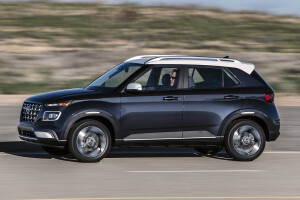
Compact SUVs get set to take over Australia


